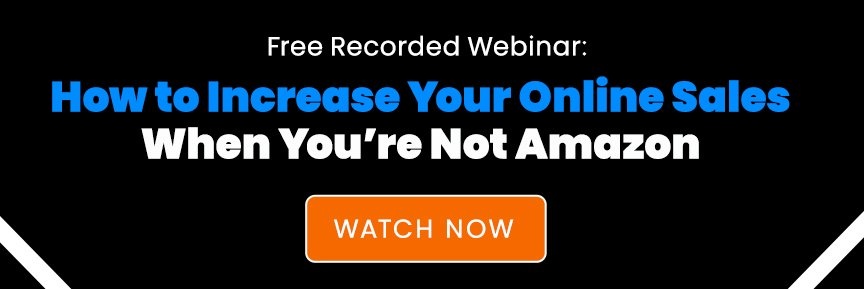Top 10 Google Ranking Factors of 2020 and How to Optimize for Them in 2021

Search engine marketing is a massive component of business success nowadays. For example, Google's first page of search results captures anywhere from 71-92% of web traffic. A company needs to rank as high as possible on Google's results to attract the most customers.
Google's algorithm to determine a website's position includes many ranking factors — in other words, the criteria used to evaluate web pages concerning where they should rank. These ranking factors can relate to a wide range of elements, such as website content, technical implementation, backlinking, user signals, and so forth. Understanding Google's ranking factors is key to an effective search engine optimization (SEO) strategy.
In the following information, we'll discuss the top 10 Google ranking factors for 2020 and how to optimize them in 2021 and beyond.
1. Website Speed
Website speed refers to how quickly a particular page loads, either in whole or specific on-page elements. Speed is a critical ranking factor since much of Google's algorithm focuses on site performance and user "signals," or behavior. For instance, one study found that 46% of users say waiting for pages to load is what they dislike most about mobile web browsing. If users are impatient with an individual website's load time, they will likely "bounce" back to Google — thus resulting in a lower site ranking.
There are several ways to increase website speed, such as enabling Gzip compression or optimizing images. By doing so, you'll decrease your average bounce rate and encourage positive user signals that will feed into Google's algorithm.
2. Optimization for Mobile
It's no secret that mobile devices have become an integral part of our daily lives. For instance, in 2018, American adults spent an average of 3 hours and 23 minutes per day on their smartphones or other mobile devices. Businesses that want to rank higher on Google should focus on mobile optimization for their site.
Mobile-responsive design is one of the main ways to accomplish this. When you reformat your website for mobile devices instead of just PCs and laptops, your pages will likely capture more traffic and engage your target audience for longer.
3. Internal Linking
Many companies follow a consistent internal linking strategy to boost their Google rank. This may include a "pillar page" or "content cluster" strategy, in which a primary piece of content provides a high-level overview of a specific topic, and other pages "branch off" from the pillar page to discuss sub-topics in more detail. This format enables businesses to embed many internal links within their website.
While internal links may not carry as much weight as backlinks per Google's algorithm, they can still significantly boost a website's SEO performance. One study found that the strategic use of internal links resulted in a 40% increase in organic traffic!
4. Keyword Targeting
Since Google bases search results on keywords used in the query, keyword targeting has always been — and always will be — a key component of SEO strategy. Many companies generate new content around "focus keywords" — i.e., the primary search phrase they're targeting.
To implement this Google ranking factor, make sure that you engage in plenty of keyword research and analysis beforehand. When selecting a focus keyword, you want to find a balance between several elements, such as:
- Reach: How broad of a search term do you want to rank for? While some keywords have a broad reach, they also come with stiff competition.
- Specificity: Are you targeting a niche audience? Perhaps long-tail keywords (search phrases of 3+ words) would be a better fit with your strategy.
- Intent: You want to capture traffic, but you also want to engage prospects with high intent. Look for keywords that will accomplish both of these objectives.

5. Title and header tags
What you put in your title and header tags can help Google's algorithm to more easily index your content. For that reason, many companies make sure that focus keywords are always included in a blog post's title and scattered throughout the post itself in headings and subheadings.
Of course, organizing your content via title and header tags is not only useful for SEO purposes. With only 16% of Internet users willing to read an entire article word-for-word, title and header tags provide your site with maximum "scannability," too.
6. Meta Descriptions
A web page's meta description is the summary that appears under its title on Google's SERP ranking. Think of it as a summary or synopsis for the content on the page.
Even though meta descriptions are not officially a Google ranking factor as of this writing, they may indirectly contribute to your site's SEO score by improving your click-through rate. In other words, users are more likely to visit your page if they know what it's all about. With that in mind, a great meta description should be short, concise, and convey the main point of the page's content.
7. Image Alt-Text
One of the simplest ways for companies to boost their SEO score is to include alternative text for on-page images. This accomplishes several objectives, such as:
- Boosting SEO by helping Google understand what the image contains
- Improving website accessibility, and thus performance
- Providing an alternative means of linking, in case the image is also a link and can't load for certain users
To successfully execute an image alt-text strategy, keep your copy short, describe the image as accurately and thoroughly as possible, and remember that you don't have to include the word "image" or "picture" in the description.
8. Curated URLs
URLs (i.e., website addresses) are optimized for Google's ranking algorithm. Google states that "URLs with words that are relevant to your site's content and structure are friendlier for visitors navigating your site." When creating URLs for your site, avoid excessive keyword use, generic page names, or overly long and technical descriptions.
9. Quality of Information
Google's algorithm mainly focuses on two key pillars of SEO: relevance and authority. While relevance mostly relates to proper keyword usage and technical optimization, authority relates to the value that your pages provide to users. In other words, if your site is full of practical, high-quality information, then users will stay longer and be more likely to share or link back to your content. Ultimately, this will boost site performance and increase your SEO score.
To optimize this ranking factor, you'll have to ensure that you deliver high-value content to your target audience. You may also need to update obsolete information on your pages periodically.
10. Backlinking
Backlinks are perhaps the single most important Google ranking factor out there. A backlink is an "inbound link" from another website to one of your pages. Research consistently indicates that the more backlinks a website has, the more search traffic it will capture. For instance, backlinks from 80 referring domains may yield daily search traffic of 10,000 visitors or more!
While there are some ways to manufacture backlinks (not strictly legal or ethical) artificially, the best way to obtain them is to provide high-quality content, week in and week out.
Optimizing These Tactics for the New Year
Incorporate these tactics into your marketing plans for 2021 in several different ways. Moreover, they are often more effective when used in combination with one another. For instance, when you combine a keyword-focused title tag with a compelling meta description (as WIRED did for its "Reddit Redesign" article), you'll be in a better position to rank high on Google's results pages. You could also contribute to faster website speed by optimizing your images and alt-text for individual browsers and devices.
In summary, make sure that you continue to optimize your website in terms of speed, structure, relevance, and value. As you do so, you'll optimize for Google's top 10 ranking factors and ultimately drive more business in 2021 and beyond.
Related Posts
The Latest Updates on Google Privacy and Cookie Depreciation
November 16th, 2022Advertising on LinkedIn: How to Use Demographics for Better Ad Performance
September 7th, 20224 Unique Ways You Can Use Advanced Digital Solutions
February 3rd, 2021[VIDEO] How to Analyze Website Metrics Without Skewing Your Own Data
December 23rd, 2020Google Reduces Visibility in Search Terms Report: What You Need to Know
November 30th, 2020Categories
- Marketing Strategy (90)
- Digital Advertising (47)
- Digital Marketing (28)
- Content Marketing (17)
- OTT (16)
- ROI (13)
- Content Creative (12)
- Agency Partnerships (11)
- Social (10)
- Video (8)
- COVID-19 (7)
- Advanced Data (6)
- Research (6)
- Technology (6)
- Cox Enterprises News (5)
- Generational Marketing (5)
- Industry: Travel (5)
- Industry: eCommerce (5)
- Advertising Budget (4)
- Industry: Higher Education (4)
- Social Media Marketing (4)
- E-commerce (3)
- Podcasts (3)
- Recruitment Marketing (3)
- Search (3)
- Social Media (3)
- Branding (2)
- Inclusive Marketing (2)
- Industry: Cannabis (2)
- Industry: Home Improvement (2)
- marketing budget (2)
- CoxNext News (1)
- Industry - Automotive (1)
- Industry: Healthcare (1)
- Influencer Marketing (1)
- Podcast Advertising (1)
- Privacy (1)
- working with an agency (1)







